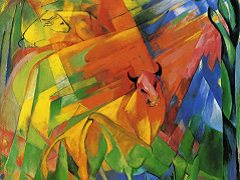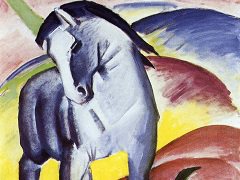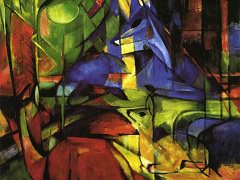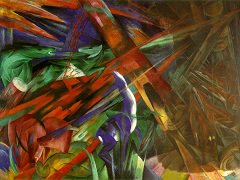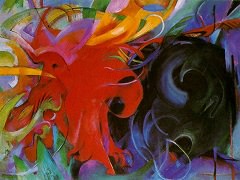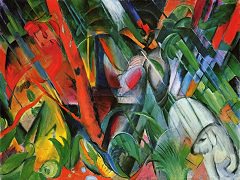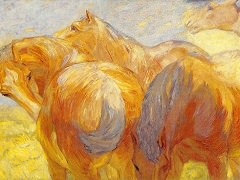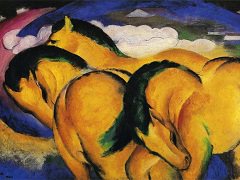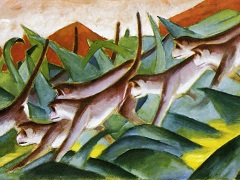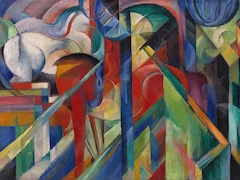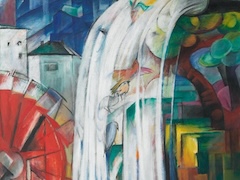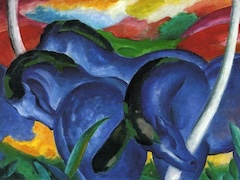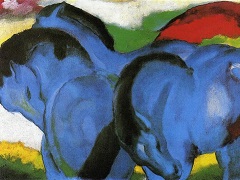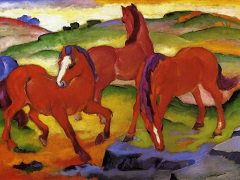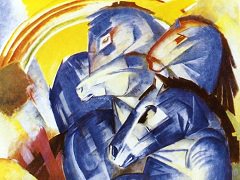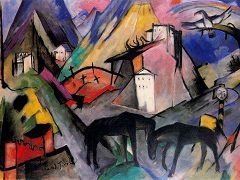Yellow Cow by Franz Marc
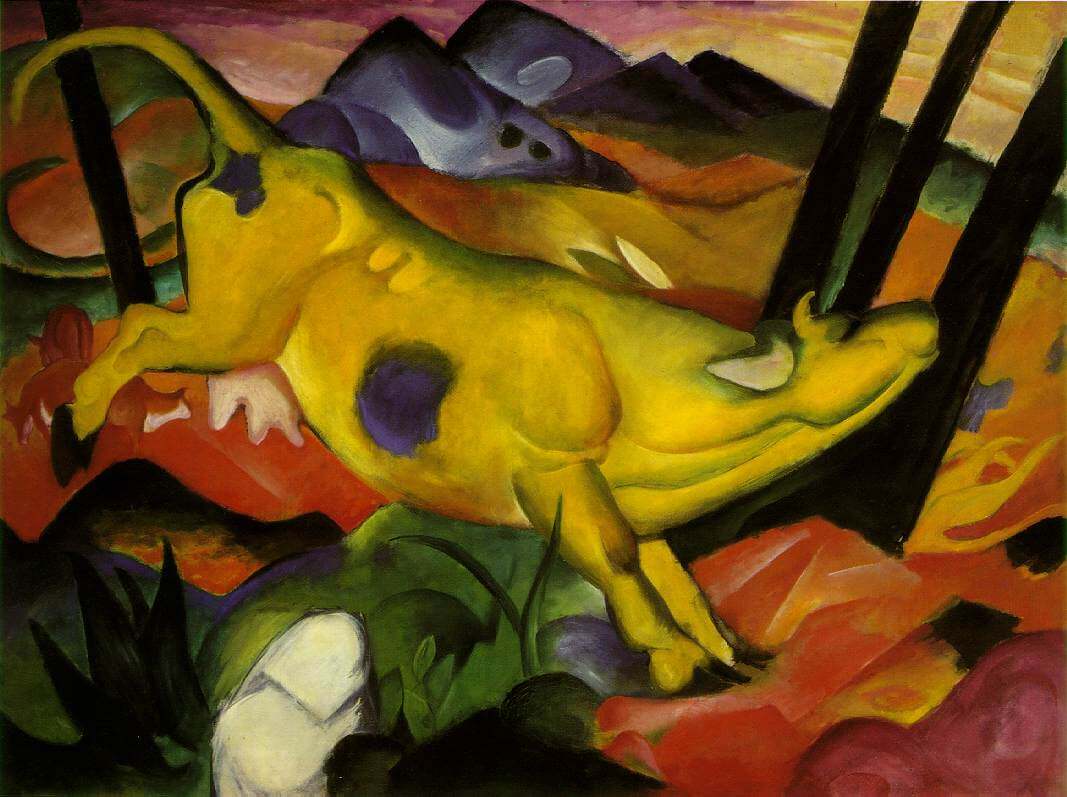
The antic joie de vivre of the Yellow Cow is the first and perhaps the only case in Marc's career of a joyous animal. It is totally abandoned to play. Marc avoids the typically human, sentimental view of animals. Rather, the cow has surrendered to its nature, as it were. It gestures in a mime language, like those poses in Hodler which also speak of metaphysical states. This animal emotion perfectly evoked the concept proposed by Kandinsky called "inner necessity", by which is meant the essence of felling determined by whatever physical and cultural circumstances pertain. A unity between the cow and nature is indicated coloristically by the repetition of the animal's yellow cast just to the right of the head, the white of the udder in area below, and he blue spots in the mountains beyond.
Franz Marc believed that animals possessed a certain godliness that men had long since lost. "People with their lack of piety, especially men, never touched my true feelings," he wrote in 1915. "But animals with their virginal sense of life awakened all that was good in me"
Yellow Cow is an early example of his use of color symbolism, a technique that had been pioneered by Vincent van Gogh. Van Gogh used color to represent emotion, but in his paintings identifiable features of the natural world remained. Marc built upon van Gogh's emotional use of color, by using colors to humanize natural forms in the landscape, emphasizing his own interest in pantheism. In a letter to fellow artist August Macke (1887 - 1914) dating from 1910, Marc assigned emotional values to colors.
Blue is the male principle, astringent and spiritual. Yellow is the female principle, gentle, gay and spiritual. Red is matter, brutal and heavy and always the color to be opposed and overcome by the other two.”
Yellow, Marc's symbol of femininity and sensuality, is shown in Yellow Cow with such intensity that the artist requires nearly equal doses of red and blue. Marc wrote: "I am trying to enhance my sensibility for the organic rhythm that I feel is in all things". Therefore, the sharp juxtaposition of the primaries supports a natural vibrancy and results in a kind of random, nearly chaotic, synesthetic quality that characterizes Kandinsky's contemporaneous work and also many of Marc's best paintings

